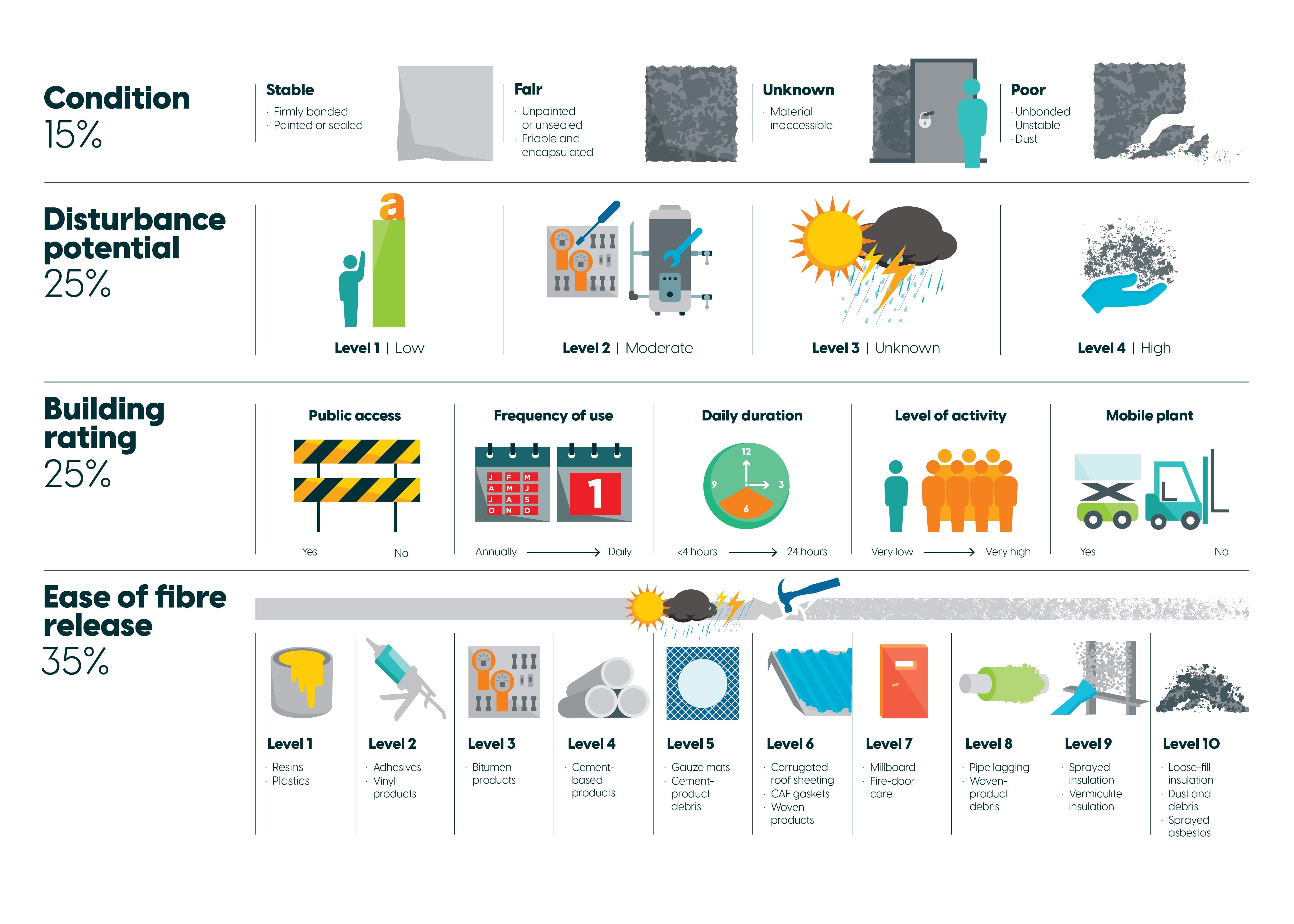To ensure ACM removal is objectively prioritised based on risk, the VAEA developed a fit-for-purpose asbestos risk assessment model, following consultation with Victorian OHS regulators, occupational hygienists, licensed asbestos removalists, trade unions and employers.
The VAEA assessment model incorporates the following risk factors: ACM friability; ACM condition; ACM disturbance potential; and building rating.
Attributing a consistent percentage weighting for each risk factor generates an aggregated risk score, providing a more objective assessment of ACM risk.
ACM friability and ACM condition are based on information from the survey assessment of each ACM and, together, contribute 50% of the final risk assessment score. The most significant factor in the risk model, ACM friability, is weighted at 35% because friability increases the risk of fibre release. ACM friability is assessed based on a scale determined by the product type. The condition of ACMs contributes up to 15% of the weighting.
Disturbance potential and building rating risk factors contribute 50% of the weighting for the final risk assessment score. These account for the built environment around the ACM. Disturbance potential is categorised into 4 levels and contributes up to 25% of the overall risk score. The building rating is based on building use, public access, the nature and frequency of access, building type and operation of mobile plant equipment, contributing the remaining 25% of the overall risk score.
There is no known safe level of asbestos exposure, so each risk factor has a value that contributes to the overall risk score – no risk factors have a zero score. A precautionary approach was used to give a higher risk weighting to assumed ACMs, where condition, disturbance potential or friability are listed as 'unknown'.
The calculation of the 4 risk factors and their weighting results in a minimum possible risk score of 19 and a maximum possible risk score of 100.
In AIRSystem, the risk assessment is automatically applied to ACMs and determines the removal priority for that ACM.
Updated


